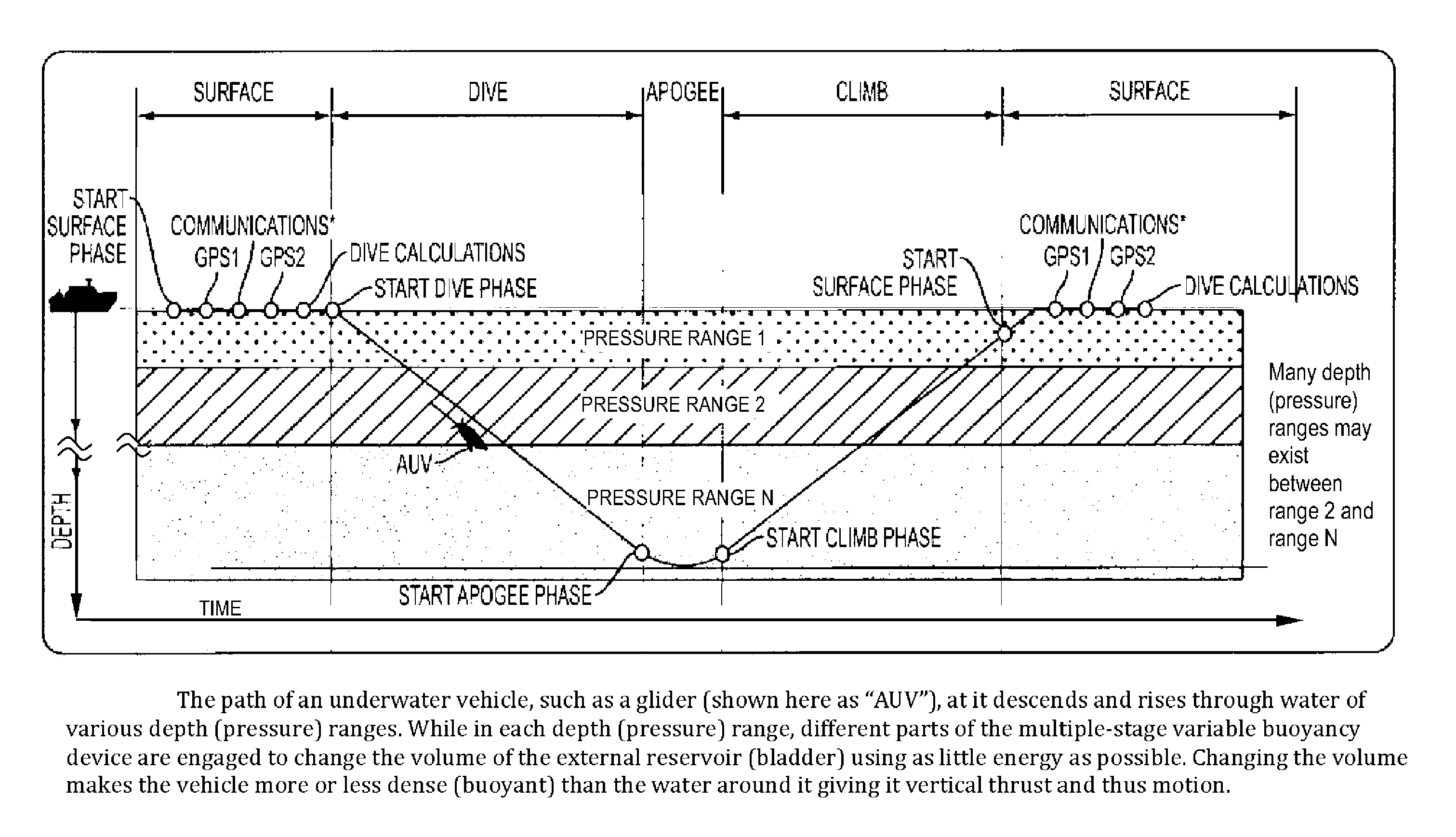Underwater Vehicle Bouyancy System
a technology for underwater vehicles and bouyancy systems, which is applied to waterborne vessels, underwater equipment, special-purpose vessels, etc., can solve the problems of limited energy-efficient operation of existing underwater vehicles, and achieve the effect of optimizing the pumping ra
- Summary
- Abstract
- Description
- Claims
- Application Information
AI Technical Summary
Benefits of technology
Problems solved by technology
Method used
Image
Examples
Embodiment Construction
[0017]Reference will now be made in detail to embodiments of the present teachings, examples of which are illustrated in the accompanying drawings.
[0018]In many autonomous underwater vehicles, most of the vehicle's energy is used to change buoyancy by pumping fluid of low compressibility into an external reservoir from an internal reservoir. The amount of pressure required to pump fluid into the external reservoir varies with external ambient pressure, which is approximately linearly related to depth. For example, in shallow water the required pressure can have a magnitude of a few hundred pounds per square inch (psi), whereas in deeper water it can have a magnitude of several thousand psi.
[0019]The difference in pressures required to pump fluid into the vehicle's external reservoir creates a design dilemma, because pump and motor combinations that are powerful enough to pump fluid at high pressure for deeper water are not energy efficient for pumping at lower pressures needed in sh...
PUM
 Login to View More
Login to View More Abstract
Description
Claims
Application Information
 Login to View More
Login to View More - R&D
- Intellectual Property
- Life Sciences
- Materials
- Tech Scout
- Unparalleled Data Quality
- Higher Quality Content
- 60% Fewer Hallucinations
Browse by: Latest US Patents, China's latest patents, Technical Efficacy Thesaurus, Application Domain, Technology Topic, Popular Technical Reports.
© 2025 PatSnap. All rights reserved.Legal|Privacy policy|Modern Slavery Act Transparency Statement|Sitemap|About US| Contact US: help@patsnap.com



